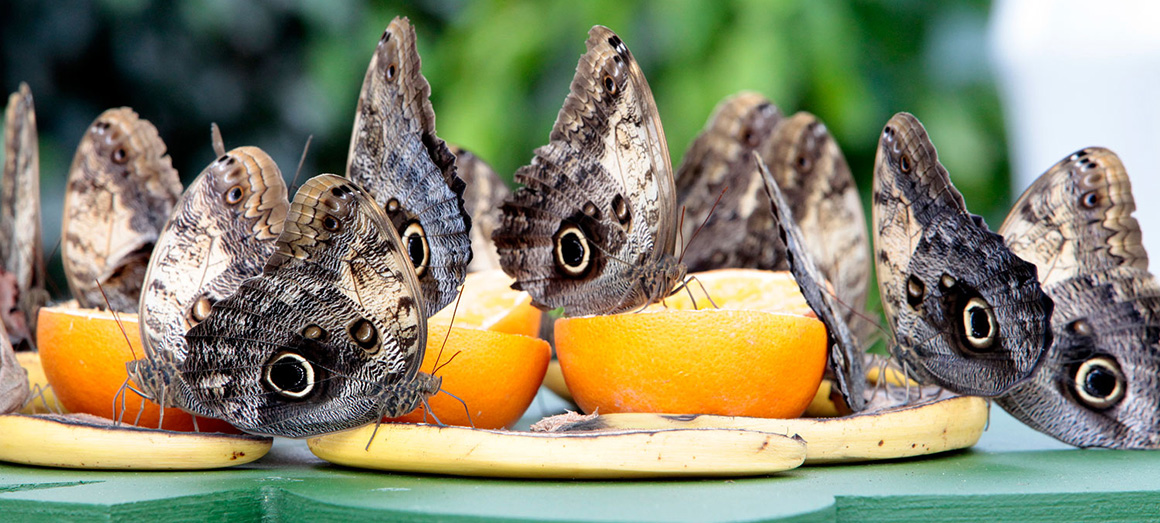The owl butterfly may be beautiful, but looks can be deceptive: in reality the species is something of a hooligan.
The juice guzzler loves nothing more than a day feeding on fermented fruit and fighting fellow males in the hope of a date.

Owl butterflies feed on fermenting fruit juices
The owl butterfly may be beautiful, but looks can be deceptive: in reality the species is something of a hooligan.
The juice guzzler loves nothing more than a day feeding on fermented fruit and fighting fellow males in the hope of a date.
Famous for the striking 'eyes' gazing from its wings, this large butterfly can be spotted a mile off.
Native to the forests of central and South America, the banana-loving species wears a disguise to protect it from predators.
This giant is conspicuous due to the yellow and black spots in the middle of its brown hind wings, which are visible when it is resting.
In captivity, these butterflies are happy feeding in groups and they enjoy the juices of fermenting fruit, typically banana, pineapple and mango.
In the forest they also feed on the dung of large mammals, and make a nuisance of themselves on sugar cane plantations.
Luke Brown, one of the expert's behind the Museum's Sensational Butterflies exhibition, said: 'The owl butterfly is a bit of a thug. It spends most of the day sat at the fruit bar drinking fermented banana juice and getting drunk.
'As evening looms it takes to the air to battle with the other males in hope of getting a date.'

An owl butterfly perches on a visitor's hand
Researchers think the dark owl eyes on its wings are a case of camouflage, warding off predators by confusing them. Animals and small birds hesitate or flee when they see the face of a potential predator, allowing the butterfly to escape.
With a wingspan of up to 20 centimetres, the species is the largest butterfly in the Americas, and is easy to spot in butterfly houses, where they certainly make their presence known.
Luke said: 'There was a case a few years ago where we had 30 or 40 owl butterflies in the house and they were all over the floor after a hard day on the juice.
'To ensure none of them got stepped on we gathered them up and put them in a large box in the office to sober them up, before releasing them back into the exhibition later that evening.'
In the wild, owl butterflies are nocturnal and fly at dusk and dawn.
Caterpillars of the species are similarly impressive, reaching 15 centimetres in length.
They have horns on their heads and small forked tails, resembling huge slugs with black spikes along the spine.
The caterpillars feed on banana trees and sugar cane, and eat so much they are considered a pest around plantations.
Don't miss a thing
Receive email updates about our news, science, exhibitions, events, products, services and fundraising activities. We may occasionally include third-party content from our corporate partners and other museums. We will not share your personal details with these third parties. You must be over the age of 13. Privacy notice.
Follow us on social media